Lily of the Valley (Our Lady’s tears, Mary’s tears, May bells, Muguet, May lily) originated in Europe, North America, and Asia. Since it needs colder temperatures and prefers growing in shadow, you can find this fragrant, herbaceous perennial in the forest.
It always has two leaves and a flower stalk with fifteen tiny, scented, bell-shaped blooms. If you dig the plant up, you will find widespread rhizomes. Since this flower propagates through those rhizomes, you practically don’t have a chance to get rid of it once established.
The Most Popular Variation of Lily of the Valley
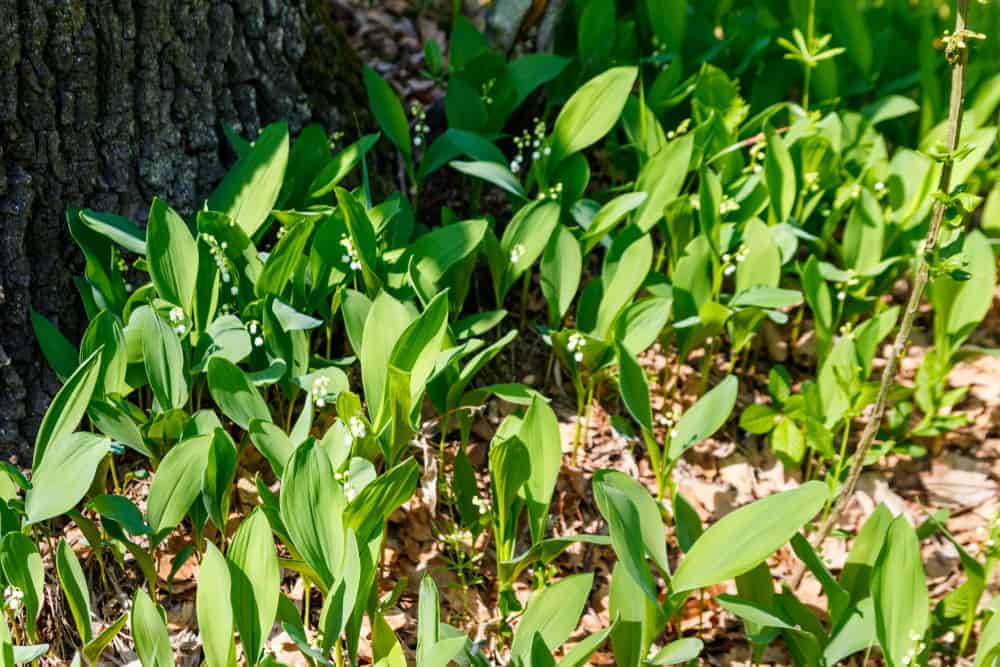
Don’t let the word ‘Lily’ confuse you. This plant hasn’t any connection with the lily family. In fact, it is a member of the family Asparagaceae. Lily of the Valley gets its botanical name ‘Convallaria majalis’ from two Latin words:
- Convallis, meaning ‘the valley’
- Majalis, meaning ‘belonging to May’
There are many popular varieties of this plant on the market, but I will recommend you a few the most fragrant and beautiful ones. Let’s see.
Popular types of Lily of the Valley |
|
|
Variety |
Flowers |
| Convallaria majalis var. rosea |
Pale-pink, fragrant flowers with flaring, pointed tips |
|
Convallaria majalis ‘Fortin’s Giant’ |
Large tubby, white, highly fragrant bell-shaped flowers with broad leaves |
|
Convallaria majalis ‘Albostriata Dainty’ |
Luxuriantly scented, waxy white bell-shaped flowers with delicately striped leaves |
|
Convallaria majalis ‘Flore Pleno’ |
Double flowers |
|
Convallaria majalis ‘Hardwick Hall’ |
Lovely, highly scented, large flowers with the neat, narrow yellow edge on the leaves |
Toxicity of Lily of the Valley
Lily of the Valley is a highly toxic plant if ingested. Practically every part of it is poisonous, including the foliage, flowers, and red berries.
It contains approximately forty cardiac glycosides, which are deadly. To make matters worse, the plant produces incredibly rare but toxic amino acid as well.
If you want to enjoy this magnificent flower in your garden, you should take care to keep your kids and pets far away from it. Also, you should wear gardening gloves while handling this plant to avoid poisoning by accident.
Growing Lily of the Valley – Pros vs. Cons
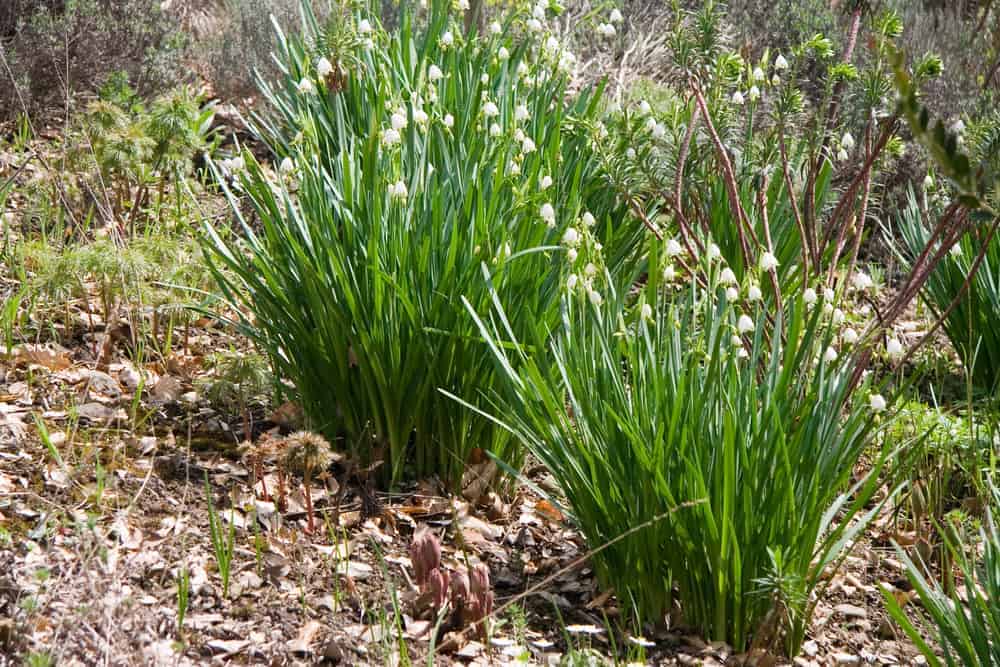
There are two myths connected with this lovely flower. In Christian mythology, this flower started growing after the tears of Virgin Mary fell to the ground during the crucifixion.
The other version says that Lily of the Valley sprung at the place where Eve’s tears dropped to the ground after being thrown out of the Garden of Eden.
Anyway, there are a lot of reasons to grow this beautiful flower. On the other hand, there are a few of them to avoid planting it in your garden. The decision depends on you.
Pros
- You can enjoy magnificent flowers for weeks during spring and summer, as well as glossy red berries in autumn
- Even though this plant prefers fertile soil, it can grow everywhere, including the acidic, sandy, clay, or loamy ground
- It thrives in the shade under deciduous trees and shrubs, making these parts of your garden lovely
- You can use Lily of the Valley to create a dense groundcover on slopes to keep erosion under control
- It doesn’t need winter care or pruning
- Deer and rabbits won’t attack this plant
Cons
- Lily of the Valley won’t flourish for a few years until established
- It can’t stand places with full sun, and won’t grow well during hot and dry summer days
- You will need to divide your plant at least once in two to three years to prevent its uncontrolled spreading
- The plant is highly toxic if ingested, and can jeopardize your kids and pets
Handle Your Lily of the Valley Wisely
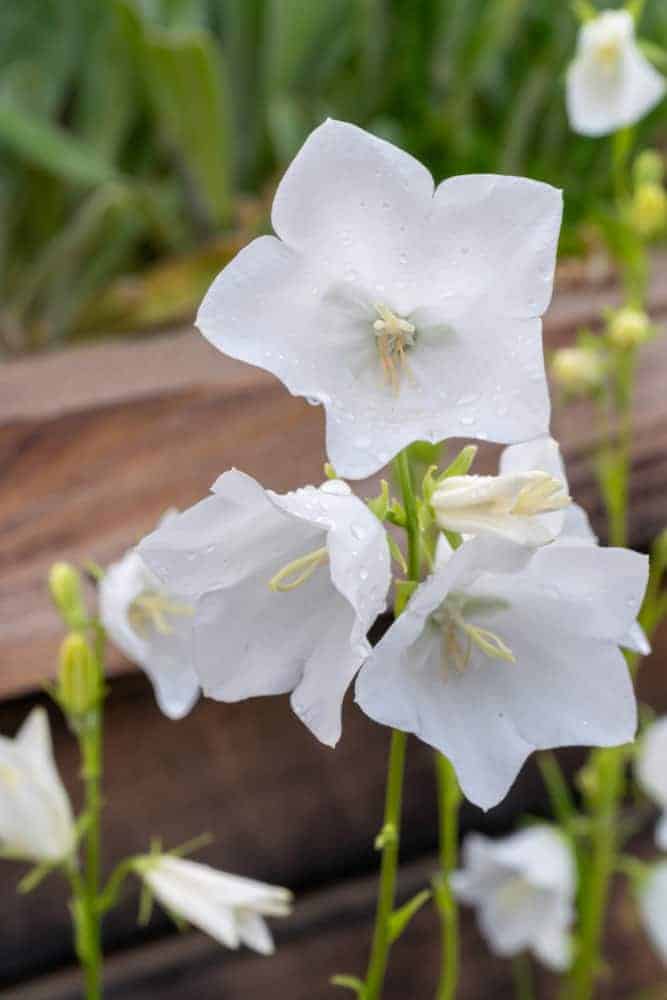
Fortunately, it is not a big deal taking care of this plant. I will list you a few ideas about what to do to put your Lily of the Valley under control. Or not?
Beautify a fence
Plant your Lily of the Valley along a garden edging. That way, you will protect the rest of the yard from the spreading of this plant. At the same time, it will thrive next to the fence and make it attractive.
Control its spreading by dividing
If you like growing Lily of the Valley in your garden, but don’t want to allow this plant to spread too much, dividing it is a solution for you. Let your plant grow freely, but split its rhizome in winter or early spring.
That way, you can control spreading of the plant and transplant it to the new spots in the yard as desired. Unfortunately, even though this flower responds well to dividing, you can’t expect it to flourish the following season.
Let it grow wild
If you have a big yard and like enjoying lovely fragrant flowers, this is an excellent option for you. Simply let your plant go wild.
That way, it will fill all the places around, which is a crucial advantage if you want to hide some ugly corners of your garden. Moreover, your cute flower can be an attractive and efficient barrier against erosion.
How to Plant Lily of the Valley Flower in Your Garden
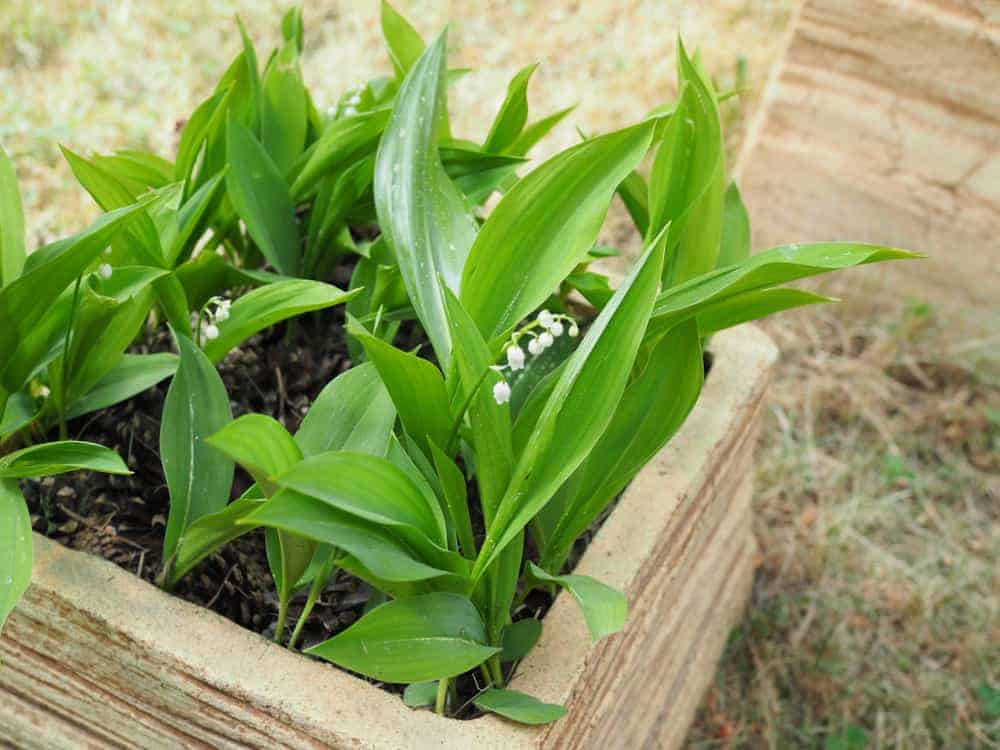
Propagating Lily of the Valley outdoors
It is crucial to divide rhizome of this invasive plant every few years, or you can face overflowing your yard. It may sound nice, but you should think twice. As much as this is a delightful and fragrant flower, I am sure you will want to grow some other species besides it.
It is quite easy to split them somewhere else in early spring or autumn. Divide the rhizome every two to four years, and take care to transplant only healthy and vigorous stems and rhizome.
Keep in mind that you can expect new plants at the old spot if you leave even the smallest piece of rhizome there.
Cut the rhizome the way every piece has at least one pip (eye). Plant them 1 inch (2.5 cm) deep, and take care to point the narrow tips up. Space pieces 6 to 8 inches (15 – 20 cm) apart, because young plants will grow fast and fill in the gaps in one to two growing seasons.
There is a possibility to sow seeds as well, but this process lasts too long and requires too much effort.
Propagating Lily of the Valley indoors
Purchase the rhizome with at least one pip online or in the nursery. Soak them in lukewarm water for a few hours to swell and become hard. Also, cut off the root tips by 0.5 inches (1.3 cm) to activate the roots and encourage the process of growing.
Pick out an adequate, 3 inches (7.6 cm) deep container and fill it with high-quality planting medium. Put the rhizome into the soil, 1.5 inches (3.8 cm) apart. Water abundantly, and wait for a week to see first new growth.
How to Care Lily of the Valley in Your Garden
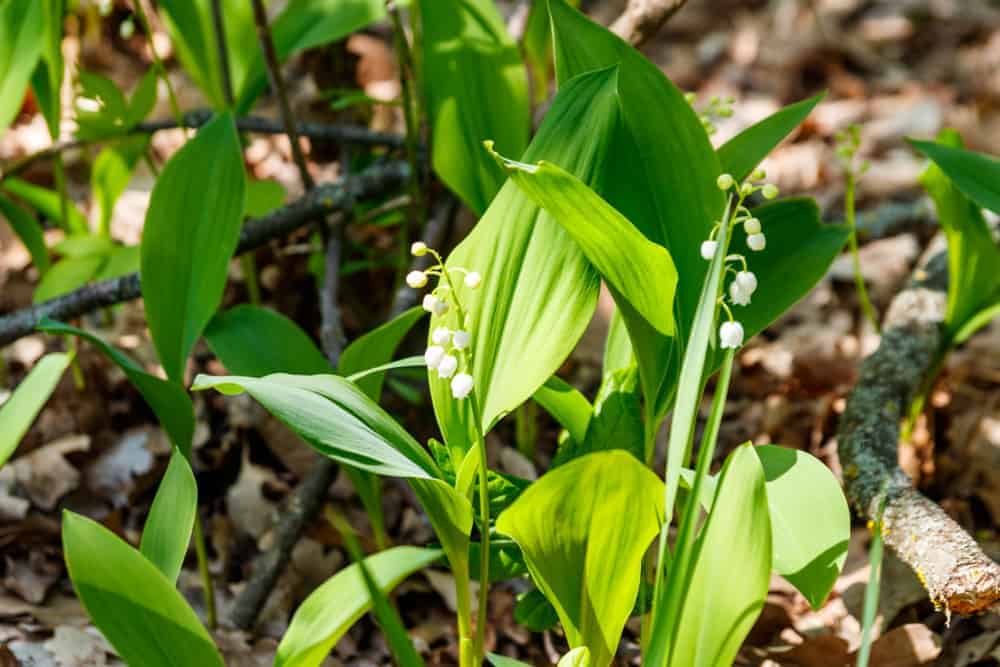
Soil
It is not complicated growing Lily of the Valley if the ground is fertile, moist, and well-drained. The best way to get a vigorous plant is to add some compost in autumn. It will provide enough nutrients for the abundant blooming of your flower.
Light
Lily of the Valley prefers growing in full or partial shade. Therefore, you should avoid planting this flower in too hot, sunny, and dry space. In such a place, your plant can’t flourish.
On the other hand, it won’t bloom as you wish if the shade is full and the place cold throughout a day. It seems that an ideal solution is a combination of morning light and some shadow after 10 am.
Temperatures
Lily of the Valley requires the temperatures from 60 to 70 F (15.5 – 21 C) to grow healthy and vigorous. Since this flower is a cold-hardy, you can grow it outdoors in most regions of the US and expect to see first flowers in late spring.
Watering
The well-established plant doesn’t need regular watering since its leaves can use the evaporation from the soil. In general, don’t water it until the top 1 to 2 inches (2.5 – 5 cm) of the ground becomes dry.
The only exception is a long period of drought when you should soak the ground where you grow your Lily of the Valley. That way, you will keep its leaves green and healthy throughout the hot summer days.
Fertilizing
Usually, it is enough to add balanced, slow-release, granular 10-10-10 fertilizer once in three months. Stop feeding your plant after the active growing season passes.
Mulching
You should add the 1 to 2 inches (2.5 – 5 cm) thick layer of mulch around your beloved flower to help in water retention. Plus, it will keep Lily of the Valley weed-free.
Pruning
There is actually no need to prune your Lily of the Valley. However, there is something else you need to do.
At the end of the blooming season, your plant will begin wilting and looking brownish and unpleasant. That is the right moment to cut back the ugly, crispy foliage and remove it from the area.
Dividing
Lily of the Valley is a rhizomatous plant, and you should divide it every few years. That is an efficient way to control its rapid spread. Plus, your flower will flourish more abundant and grow healthier and more vigorous after this activity.
The process is not complicated at all. Use a garden shovel and dig up the plant in early spring or autumn. Divide rhizome into a few parts and replant them. Take care that each piece contains pips.
Lily of the Valley Flower Pests and Diseases
Basically, Lily of the Valley doesn’t have severe problems with pests and infections. You can solve most problems by using organic neem oil. As usual, prevention is the best solution. Take care to maintain your flower well, and it will grow healthy, without severe issues.
Fungal diseases
They are usually connected with inappropriate watering and wetting the plant’s leaves. Consequently, they become yellow and unattractive, and sometimes with brown or black spots.
Rust
It will appear as small yellow spots on the upper side of the foliage. At the same time, you may see orange-brown masses of spore on the underside of the leaves. Try to get rid of fungi by applying fungicides. However, in most cases, the only thing you can do when disease occurs is to destroy plants to prevent the spreading of infection.
Southern blight
You may spot this ball-like structure on the base of the plant’s stem. Once these fungi attack your flowers, the only thing you can do is to destroy them.
Weevils
Since these bugs chew the edges of leaves, you will spot notches on them. Spray your plant every other day with neem oil for ten days to put insects under control.
Foliar nematode
Once your plant becomes suffering from these worms, you will notice yellow areas around the plant’s veins, which turn brown over time.
Solve the problem by watering your plants without sprinkling the foliage. Destroy infected plants to prevent spreading the disease.
Slugs
They feed on the foliage of your plant and can ruin its lovely appearance. Get rid of these menaces by using beer traps.
Deer and rabbits
Thanks to its toxicity, Lily of the Valley is resistant to wildlife.
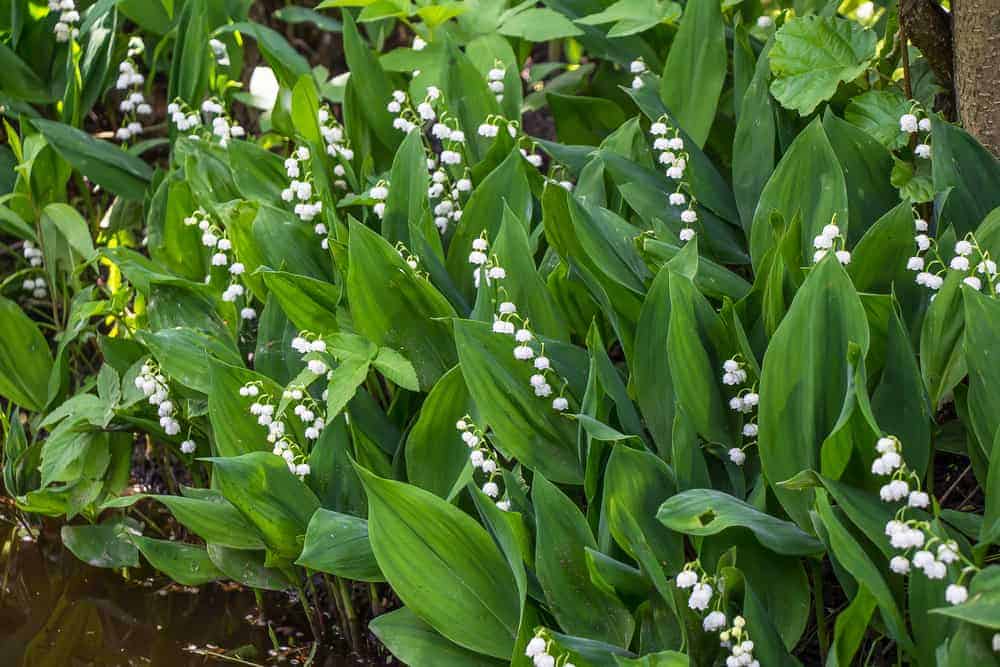
Leave a comment